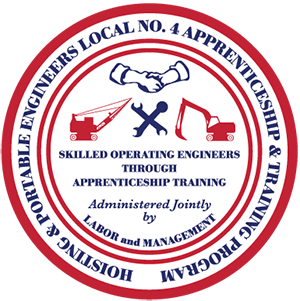Brothers and Sisters,
To start, I’d like to congratulate Business Manager Bill McLaughlin, the line officers, executive board, guard, conductor, and delegates during the recent nomination meeting. This safety corner is on OSHA’s recent compliance directive for Cranes and Derricks in construction covered by Subpart CC. The following are some of the items that would be focused on during an inspection on a construction site.
- Determine the adequacy of ground conditions beneath the equipment set-up area such as the support/foundation, matting, cribbing, blocking, etc.
- When overhead power lines are on the construction site, ask if the utility owner/operator was contacted and if the lines are energized. Obtain the voltage of the power lines (if known). Verify whether a work zone around the crane was demarcated and what encroachment prevention steps are being used.
- When a signal person is used on the worksite, verify the individual’s qualifications/documentation.
- Verify that the communication system being used by the crane operator and the signal person is the one specified on the signal person’s qualification documentation.
- If lift plans are being used, verify that they are being followed.
- When equipment is used to hoist personnel, identify who determined that it is infeasible to use another way to reach the work area and that it is necessary to use the crane for this task.
- Verify whether employers are holding required meetings, such as planning meetings necessary for working near overhead power lines, conducting Assembly/Disassembly (A/D), or hoisting.
- Verify that load chart and operations’ manuals are available, written in a language that the operator understands (specified on the operator’s certification), and that the information is applicable to the particular crane. Ask the operator or employer where the documents are kept.
- Verify operator qualifications and training. Observe crane operations and interview both the employer and the operator to determine whether the operator is competent to operate the equipment safely.
- Verify that the equipment and wire rope inspection requirements have been met and that the documentation is available for all inspections of the equipment. Identify who did the inspection and verify that inspector’s qualifications.
- Determine, through interview and observation, if safety devices and operational aids are functioning through interview or observation.
- Ask what loads have been lifted and how the operator and/or rigger are determining the weight of the load.
- Verify that qualified riggers are being used: For assembly and disassembly work, as per § 1926.1404(r)(1).
- When A/D is being performed, ask who the A/D director is and verify whether this person is at the worksite.
- If there are mechanics and/or oilers working on or near the equipment:
- a. Verify their qualifications regarding the work being performed.
- b. Ask how they are communicating with the operator when the equipment is being operated.
I hope you have a SAFE and busy summer season.
Peter Carpenter
Co-Safety Officer
